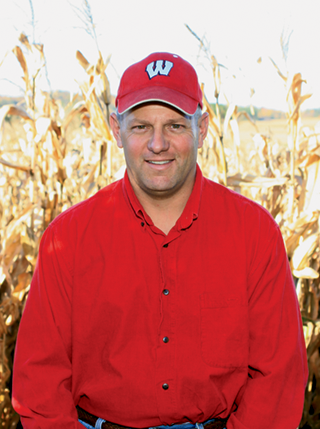Guidance systems and control monitors really make on-farm research easier. In the past, it was hard to set up replicated plots, and time consuming to record and weigh the results. Today, yield monitors, guidance systems and rate controllers really make research much easier.
Good on-farm research requires being able to replicate and randomize treatments. A treatment is each item you are testing. Replicate treatments to make sure results aren’t coincidental to field locations, but are repeatable across the field.
Easy With Guidance
In the past, it was difficult to randomize treatments because you needed to mark them with stakes. With a guidance system, you simply drive your first line and/or contour and use guidance to pick swaths as you plant.
Let’s say you want to test four hybrids — A versus B versus C versus D — and you want to replicate the test three times. You would plant three replications of four hybrids, or make 12 strips across the field.
You should randomize each of the four blocks. You might order the hybrid strips as A-D-C-B, then C-B-D-A, and then B-A-D-C for a total of 12 randomized and replicated strips.
With guidance, this task is easy. You can plant all A treatments first by planting swaths 1, 8 and 10, then change the seed; plant B hybrids by planting swaths 4, 6 and 9, then change the seed; and plant C hybrids in swaths 3, 5 and 12; and finally plant the D hybrid in swaths 2, 7 and 11.
You could also use the same logic to test populations and/or fertilizer rates simply by following the same procedure you used with the seed example above. If you add rate controllers to your system, it can be even easier to conduct these tests.
You can use guidance to lay in treatments, but rate controllers allow you to change product rates on the fly. This means you can set the rate of seeds or pounds of fertilizer per acre at the beginning of the swath, apply seed and/or fertilizer and then change the rate with the push of a button before you plant the next treatment.
Record Data
You can use the monitors that control the guidance and rate controllers to record what you’re doing on the go. Then when you harvest the plots, the monitor can record yield information and store it with the proper planting or application information so all of your research data is stored in an organized fashion.
This information can be downloaded to software on your computer to be summarized to manage your farm. With this level of data storage, you can actually make your whole farm into a test plot by storing information on every field and impose treatments across your whole farm as you learn how to manage the information.
As you learn, you will turn entire fields into test sites for various types of experiments. For example, you may have a fixed seeding rate today, but are considering variable-rate seeding. If your planter is twice as wide as your corn head, which many are, you could set up your planter so one side of the planter plants a fixed rate and the other side is planting a variable rate.
You could plant different rates on half of the planter and compare those to fixed rates on the other side, across different soil types on your farm. This information will be critical in helping you assess how you might set up variable-rate populations on your farm in the future.
Start Simply
This is just one of many examples of what you can test. Start simply with a few tests, then begin to build on tests to learn more about your management.
This will allow you to get multiple years of information on your management system and help you to determine what management changes are working the best for your soil types and farming system.







